Namboodiri weddings
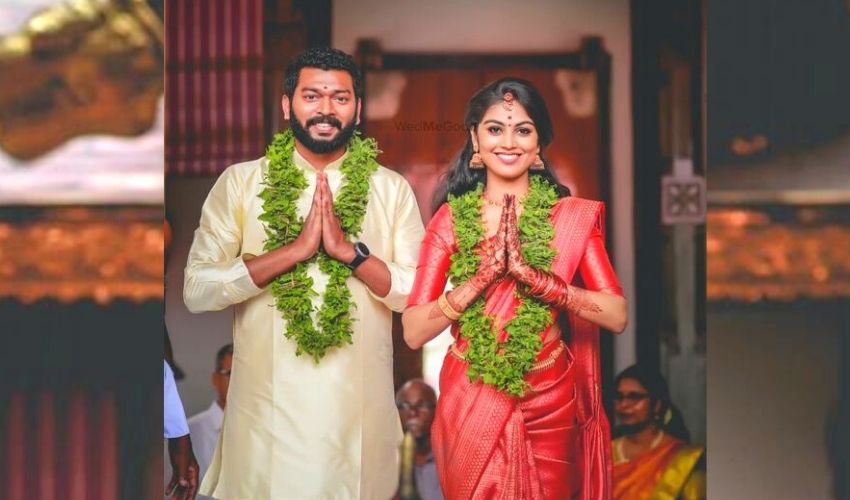
Weddings are the most cherished ceremonies where two people unite and promise to live together for life. There are many sorts of weddings and traditions in this world, but there is also one peculiar wedding which is termed, as "Namboodiri weddings."
A Namboodiri wedding ceremony is performed among the originalBrahmin Malayali Caste. In this ceremony, the eldest son of the Nambudiri household marries a Nambudiri girl. Where several mythological ceremonies & rituals are performed, in a Namboodiri wedding. In this article, we are going to give the precise erudition regarding the wedding of the Namboodiri community of Kerala.
Namboodiri's History & Their Origins
Namboodiri mythicism started many years ago. It is believed that when Parashurama(the sixth avatar of Lord Vishnu) threw his axe in a sea, the region was created. It is believed that the Nambudiri colonisation was created when the legend Parashurama brought the Brahmins to the Southwest coast in India. While the region was created, from the banks of Narmada, Krishna, Kaveri rivers by the hands of Legend Parashurama. Traditionally, Nimbudiri Brahmins lived on the Southwest coast which is now known as the state of Kerala. They were a rich highborn wealthy caste group of supreme ritual and materialistic status.
There are Five Namboodiri Classes
- Tampurakkal (The higher Caste)
- The Adhyas(Temple Priests)
- the Vistas(The Ritualists)
- The Samanyas(Who Study Vedas)
- The Jatim Atras(They Practice Ayurvedic medicines)
The Traditional Ceremonies Performed in Namboodiri Wedding
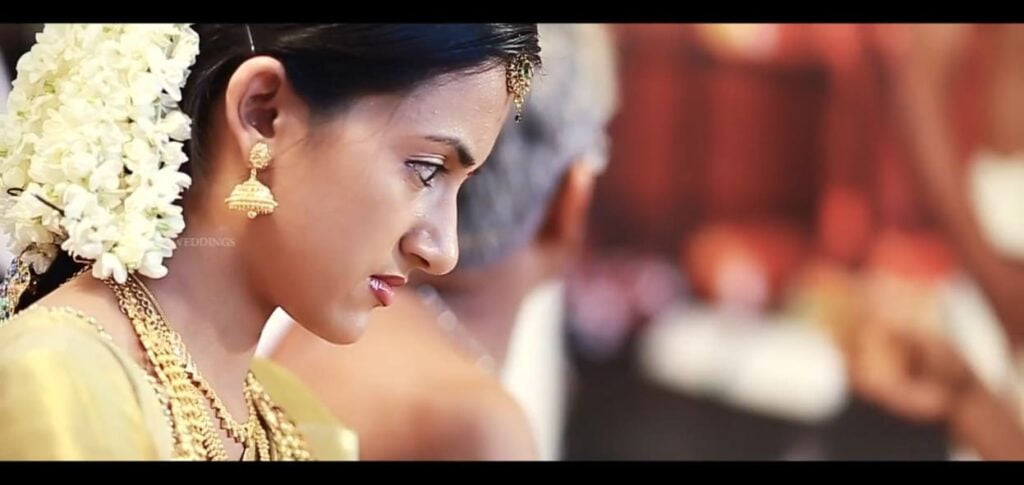
In the first Namboodiri wedding, only the eldest boy of the house could marry a Namboodiri Brahmin, that too three wives. In earlier times, the marriage was prevalent. Dowries remained very high and getting a girl married meant a burden to her family. Sometimes it used to happen that a man might take a second wife in exchange to save on the dowry for his daughter. It also used to happen that after marriage, a girl had no rights in her native home, and nobody cares whether she was happy or sorrowful. Nobody cares, she had to bear it.
Many Nambudiri women felt that being a Nambudiri woman was the worst destiny any human being could have. But gradually, years have passed while things have changed a lot. Ancestral legacy was in the male line while the property was retained unimpaired by the rule of primogeniture and lack of freedom. Now, these customs & thinking have changed a lot since the 1920s and 1930s.
The Ceremonies Performed in a Namboodiri Wedding
The Nambudiri wedding follows Vedic rituals and its customs in the wedding ceremony but the main one is "Agni" the fire. In earlier times, the Nambudiri wedding used to be a four day/seven-day marriage function with numerous rituals performed. Nowadays, these rituals are reduced to a few hours a day. Below are the rituals performed in a Nambudiri Wedding.
Varanam
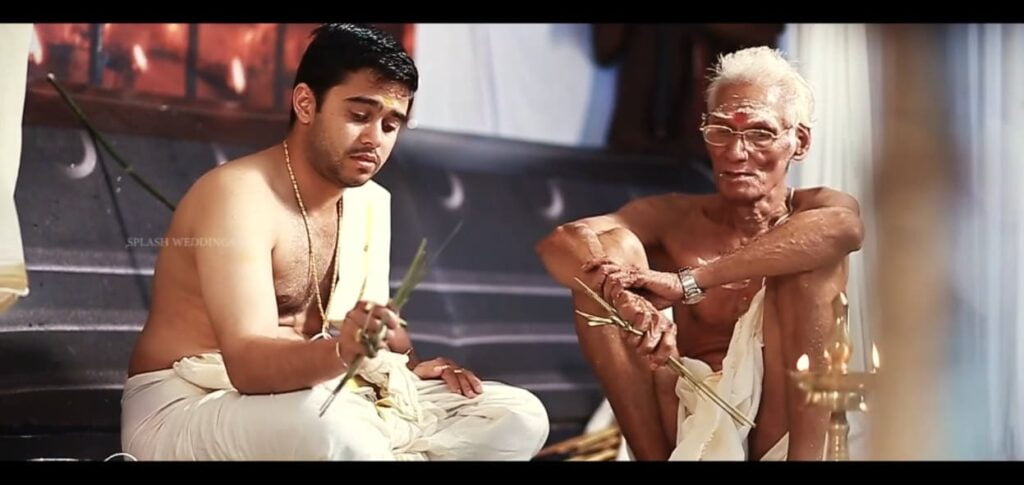
The Fits ritual is performed when the bride's father invites the groom to take a ritual bath and wear a traditional dress called 'Thattutukal' while performing the marriage ceremonies. The rituals involve Ganapati Nivedyam the Ganpati pooja in praise of removal of obstacles.
Endowments
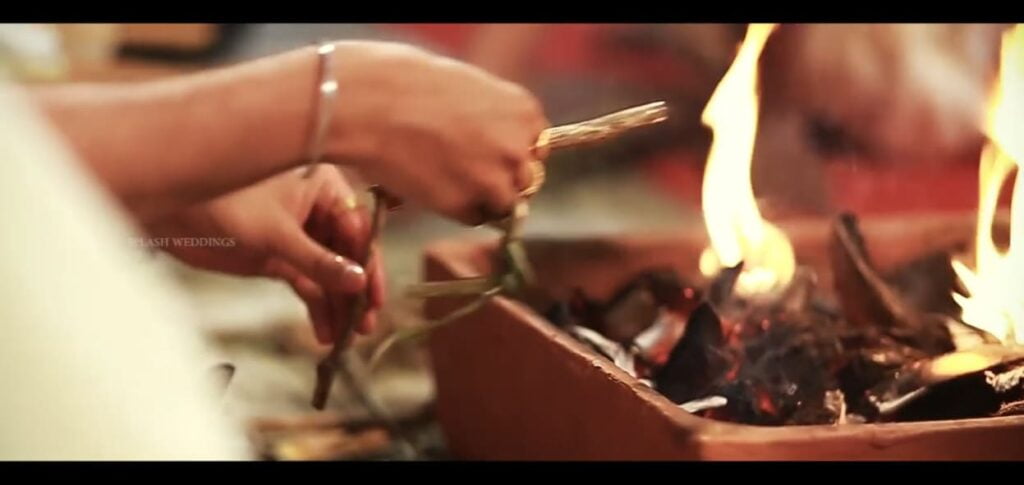
The second step is offerings made to get forgiveness from any type of errors or bad deeds made in the past. The ritual is named as 'Prayaschitta Daanam'.
Nandeemukham
This is a ritual in which blessings and permission of Gods and ancestors are asked.
Purification
Purification is another ceremony in which the holy water(Gangajal) is sprinkled while chanting the mantra 'Punyaha'. This ritual is performed to get rid of impurities, seek spiritual blessings, longevity, good health and victory.
Special Purification of Bride
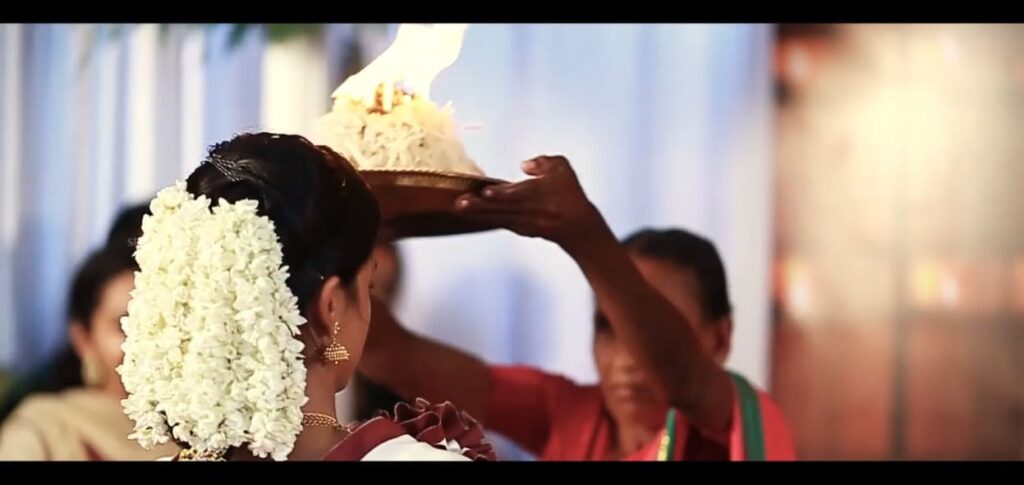
A special purification is given to the bride by waving of a pot with a flame in a circular motion in the front face of the bride to resist negative energies. A lady stands in front of the groom holding a Tengin Pookkulaor(flowers from coconut tree).
Welcome the groom
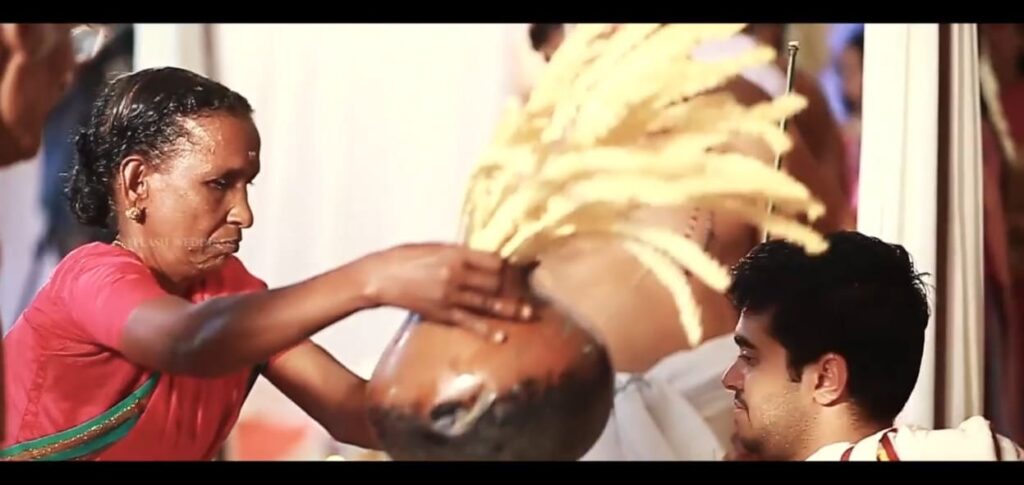
Brides father formally does Abhivadyam(bows down his head in front of the groom) and washes the grooms feet. This also includes the exchanges and presents of new clothes by the bride to the groom and by the groom to the bride.
Tying Tali Kettal
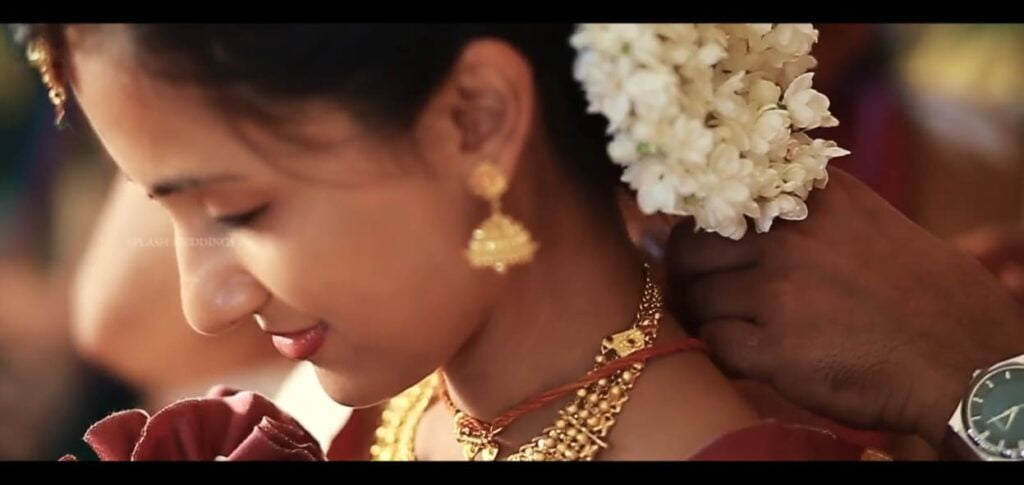
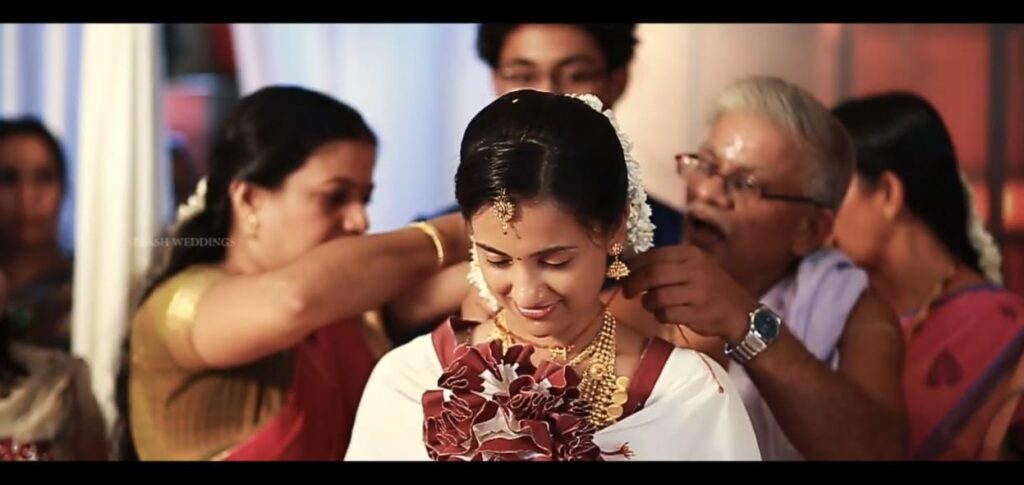
A sacred thread, which is tied around the bride's throat. Along with Thali, which is a very valuable small gold ornament is also tied. The brides father performs a Pooja to Shiva and Parvati for blessings.
Puffed Rice & Eye Liner
Laja Homa(the grains) and eyeliner to be applied by the groom which are ritually prepared by the bride.
Homa-The Fire Ritual
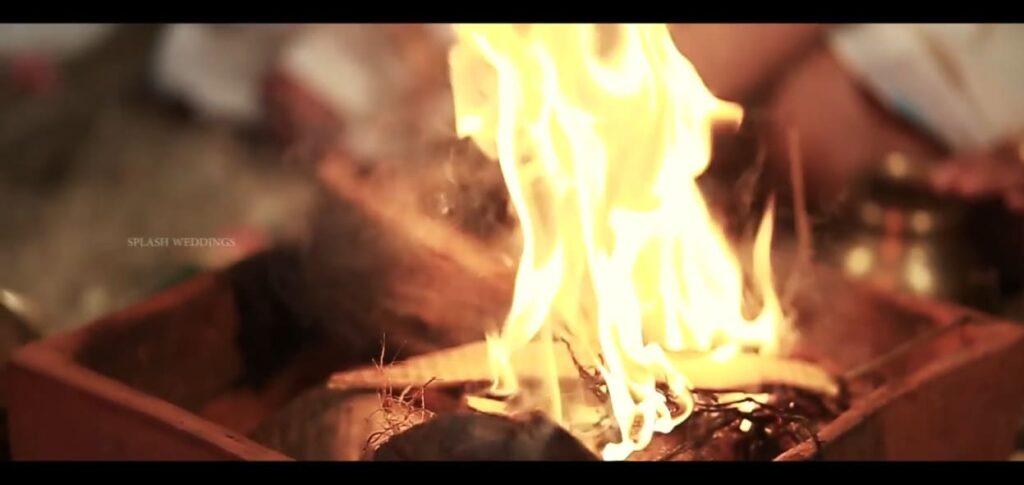
After performing a ritual of purification & sacrificial offerings the groom in his new attire waits for the bride to come.
Aayirathil Uzhiyal - the Bridals Arrival
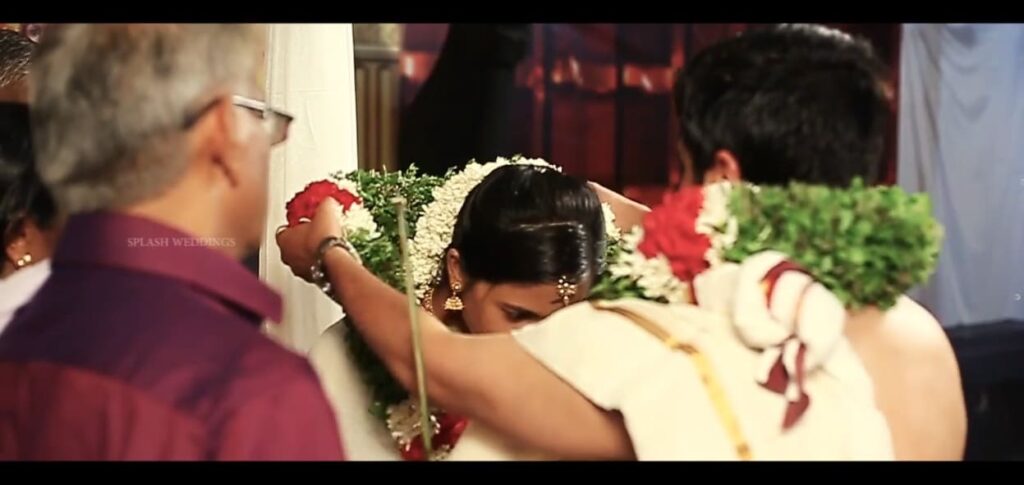
As the bride arrives, a lady waves at her with a plate packed 1000 threads, which are lit aflame. This ritual indicates Vishwavasu, the Gandharva who has been the girls ever-present protector till marriage.
Mukha Darshanam - See Eachother Faces
Danam, is performed by the groom. Now they see each other's faces.
Udakapurvam
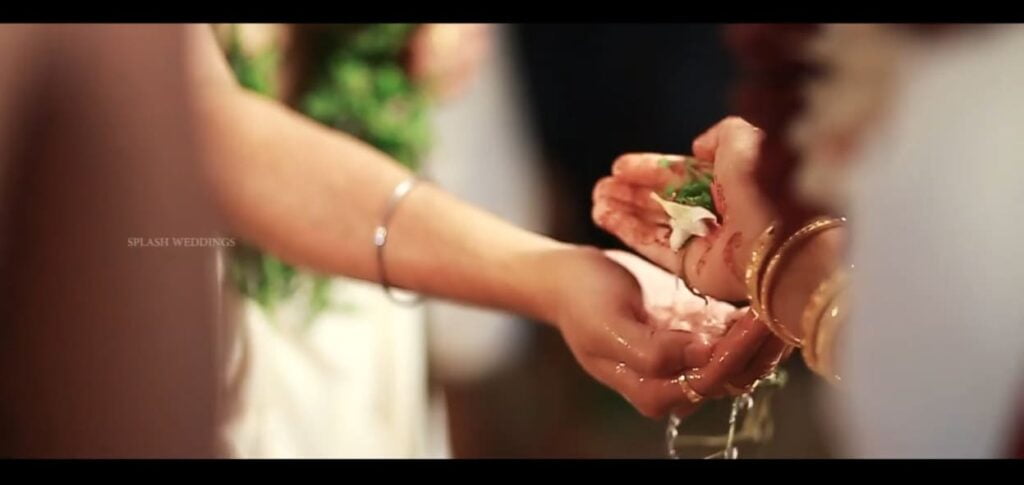
This is an important ritual in which the brides father recites mantra & pours some water into both hands of bride's then bride pour it onto the groom's hands. While the mantras are chanted continuously. This ritual defines the togetherness of both bride & groom dharmic & domestic duties for life.
Panigrahanam - Holding Hands
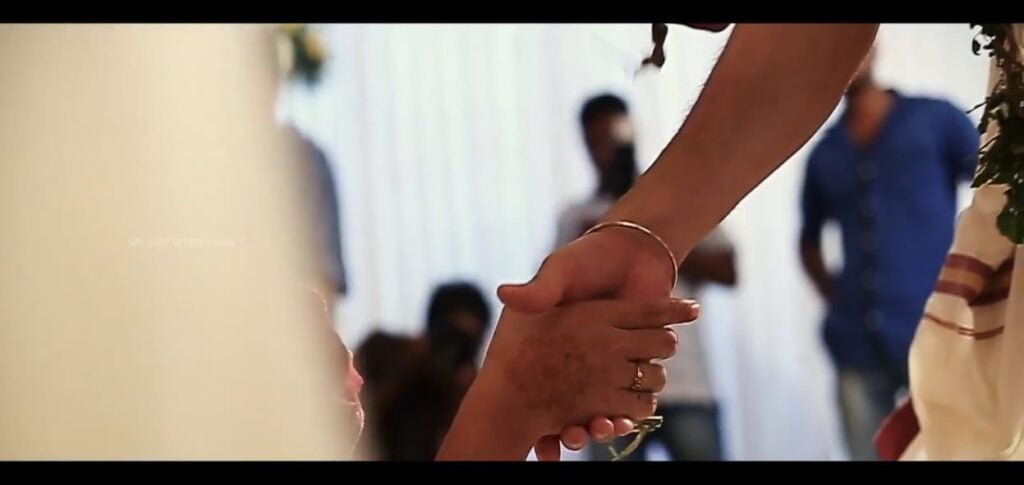
While reciting the mantras, the groom now formally holds the bride's hands. This mantra says that both of them vows to live together and perform domestic & dharmic rituals together their entire life.
Laja Homa - Offering Puffed Rice
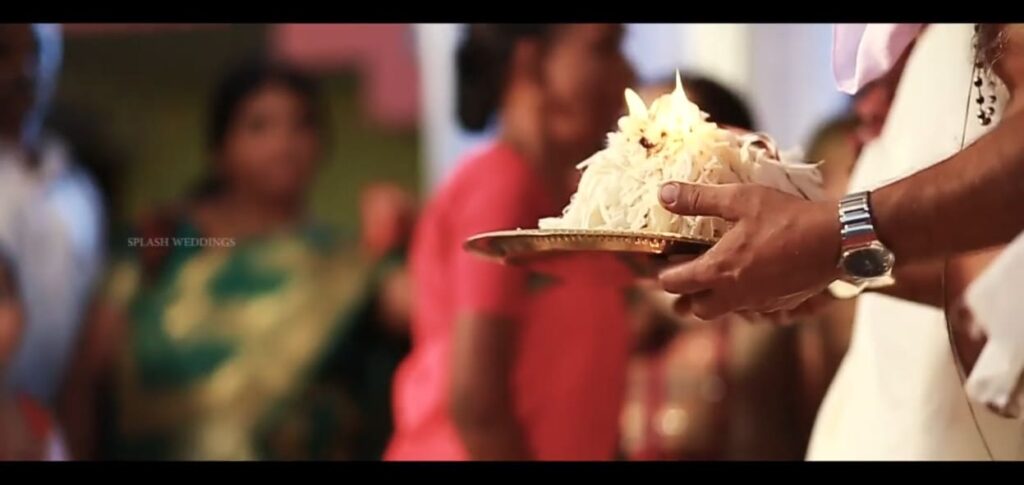
Now the groom recites mantra with offering puffed rice. According to Vedic scholars chanting of Vivaha Sukta(Veliothu) is to be a blessed couple.
Agnipradakshinam
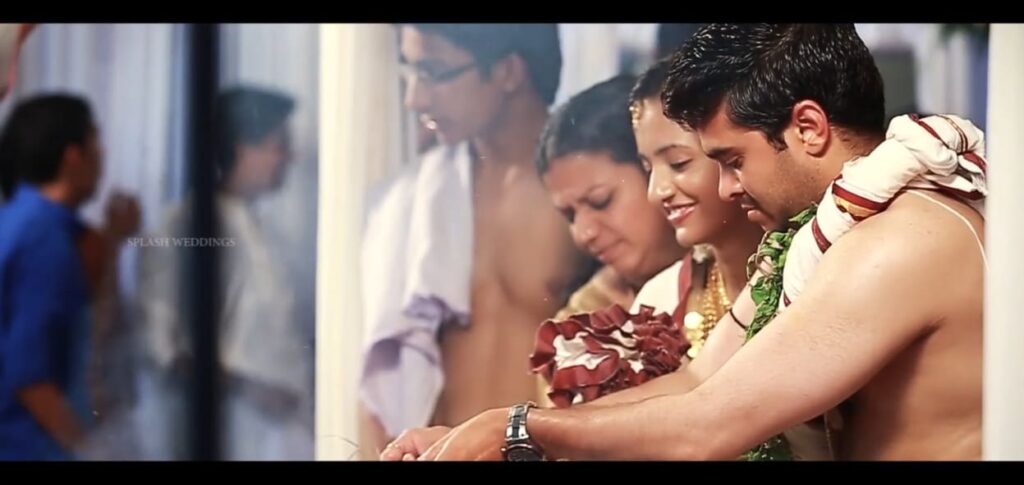
The fire ritual is done while reciting special mantras. The mantra declares that by this marriage, they have started into an inseparable bond.
Ashmarohanam - Stepping on The Rock
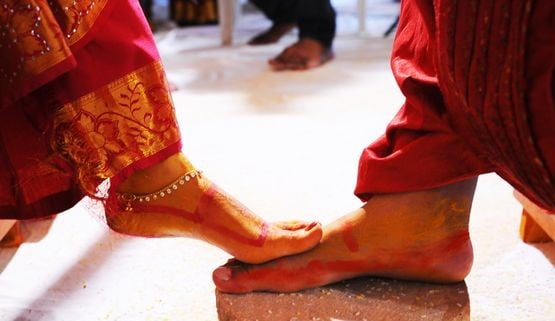
While reciting mantras the groom makes the bride step on a piece of rock. This ritual is performed so that the couple would stay firm and stable in front of all the issues coming in their life.
Saptapadhi
Reciting mantras together the couple takes seven steps ahead in seeking wealth, victory, strength and other good health and habits.
Heads Joining
Now the couple touches their head together by bending slightly. This ritual signifies the union of the couples life forces.
Arundhati Sighting
'Arundhati' is a star which symbolises good married life. That is why the couples pray for the blessings towards the North star 'Arundhati'.
Homa
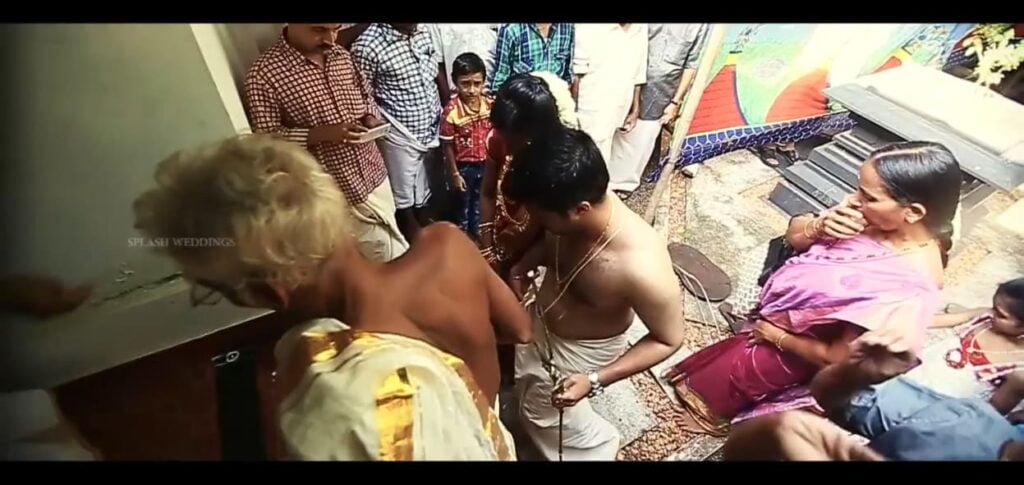
The last ritual is performed which signifies the completion of the wedding ceremonies and rituals. In the end, the groom transfers the stick to a special tree called 'Samidha'. At last, the Garhapatyam ( depicts the master of the house) chants mantras for the couple to use it in all the fire rituals they will perform in future.
Read Also: Mehndi designs for wedding


